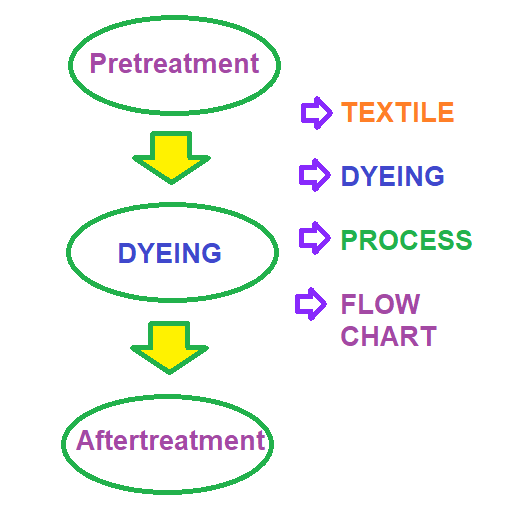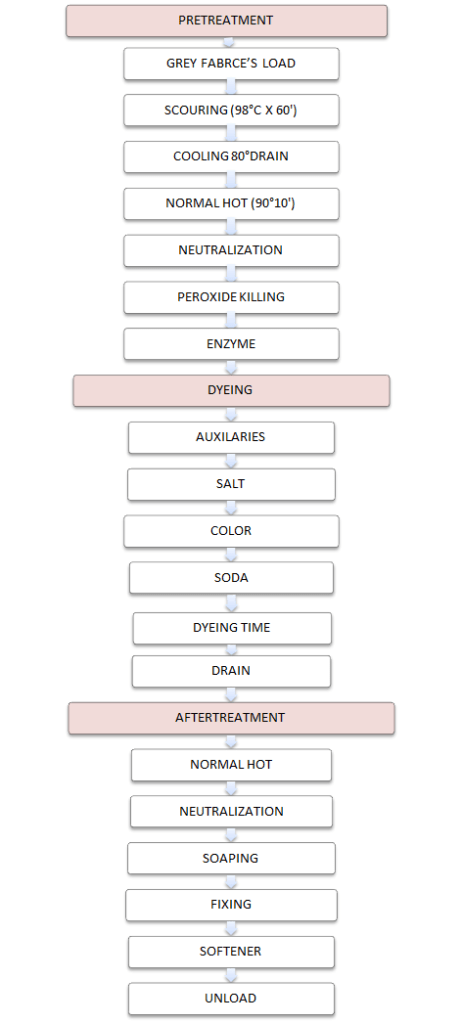Textile dyeing is the process of coloring fibers, yarns, or fabrics with various dyes and chemicals. Dyeing is an important process in the textile industry because it improves the appearance and functionality of fabrics. It entails careful dye and chemical selection, precise application methods, and stringent quality control measures to achieve consistent and long-lasting color results. Textile dyeing can be done in a variety of ways, depending on the desired outcome and the nature of the textile substrate.
Why is the dyeing process in textiles important?
The dyeing process is important in textiles for several reasons let’s discuss some main topics:
- Aesthetics: Dyeing adds color to textiles and enhances their appearance, making them more attractive and appealing to consumers.
- Variety: Dyeing allows for a wide range of colors and shades to be created, offering more variety and options to consumers.
- Customization: Dyeing enables textiles to be customized to meet specific design and fashion requirements.
- Branding: Dyeing allows companies to create unique colors and patterns that can be used to distinguish their products from those of their competitors.
- Durability: Dyeing can improve the durability of textiles, making them more resistant to fading and wear.
- Sustainability: Dyeing can be done using eco-friendly and sustainable methods, such as using natural dyes, which can reduce the environmental impact of the textile industry.
Overall, the dyeing process is a crucial step in the textile manufacturing process, as it allows for the creation of textiles that are visually appealing, functional, and sustainable.
Textile dyeing process and process flow chart of cotton fabric:

Nother fiber is as good as cotton fiber. Cotton is a natural fiber. It is used all over the world. So the dyeing process is special. As a result, this is so important for the textile industry. A flow chart for cotton or light-colored dyeing can help a learner realize this easily. Textile dyeing processes are given below:
Basic dyeing process technique:
There are three basic techniques to consider for the cotton dyeing process. This dyeing mechanism occurs only in the dyeing portion of the dyeing process flow chart. which are given below:
- The attachment of the dye molecule to the surface of the fiber
- The penetration of dye molecules to the core of the fiber
- The fixation of dye molecules to the molecular structure of the fiber
FULL PROCESS FLOW CHART OF TEXTILE DYEING PROCESS OF COTTON FABRIC:

For better understanding a textile dyeing procedure diagram is given below:
There are three basic parts of the dyeing process which are given below:
- Pretreatment: The process for preparing the fiber to take dye. Scouring, bleaching, and enzyme processes prepare the fiber for dyeing.
- Dyeing: Colorant material is used hare to dye the fiber molecule.
- Aftertreatment: loose dyes are removed here. Dye-fixing chemicals are used here to fix up the dye material. The fiber is also softening here.
What are the Types of Dyeing in Textile?
There are several types of dyeing methods in the textile industry, including direct, reactive, vat, disperse, acid, and pigment dyeing. Each method requires specific chemical compositions and procedures to achieve the desired color fastness and appearance. The textile dyeing process involves careful preparation, dyeing, and finishing steps to ensure the color consistency and quality of the fabric.
Conclusion:
In conclusion, dying fabrics is a complicated process that takes time and skill to complete. With the right knowledge, dyeing can be done to make colors that are bright and last a long time, whether it’s one color or many, submersion or printing. It is important to keep in mind that the quality of the dyes and fabrics used will greatly affect the end result. Therefore, selecting high-quality materials is essential for successful textile dyeing processes.
The textile dyeing process depends on three basic parts which are Pretreatment, Dyeing, and After-treatment.
Research link:
You may read some other article:
- Cotton Nylon Blend Fabric Dyeing Process With Easy Steps
- Natural Dyeing Process of Cotton With A Complete Experiment
- Optimizing the Knit Dyeing and Finishing Process
FOR MORE INFO VISIT KNIT DYEING DETAILS
[…] is the application of natural dyes to the fiber molecule of cotton fabric. It is the most popular dyeing procedure at present because less amount of hazardous chemicals are using. As a result, peephole converting […]
[…] This is the basic dyeing process flow chart of knit dyeing. […]
[…] textile dyeing process-for practical use […]
[…] textile dyeing process-for practical use […]
[…] textile dyeing process-for practical use […]
[…] textile dyeing process-for practical use […]
[…] textile dyeing process-for practical use […]
[…] textile dyeing process-for practical use […]
[…] textile dyeing process-for practical use […]